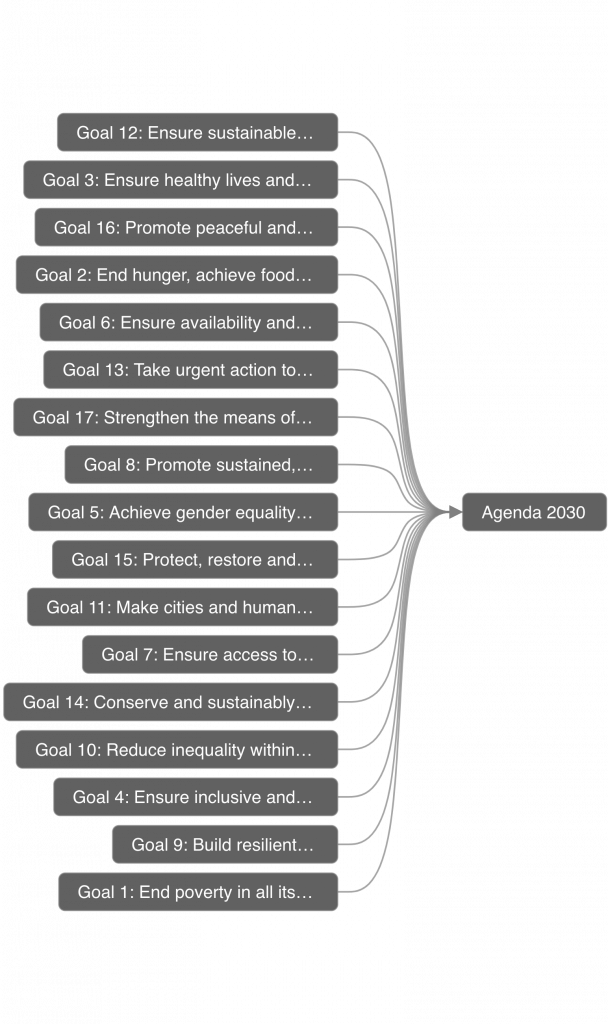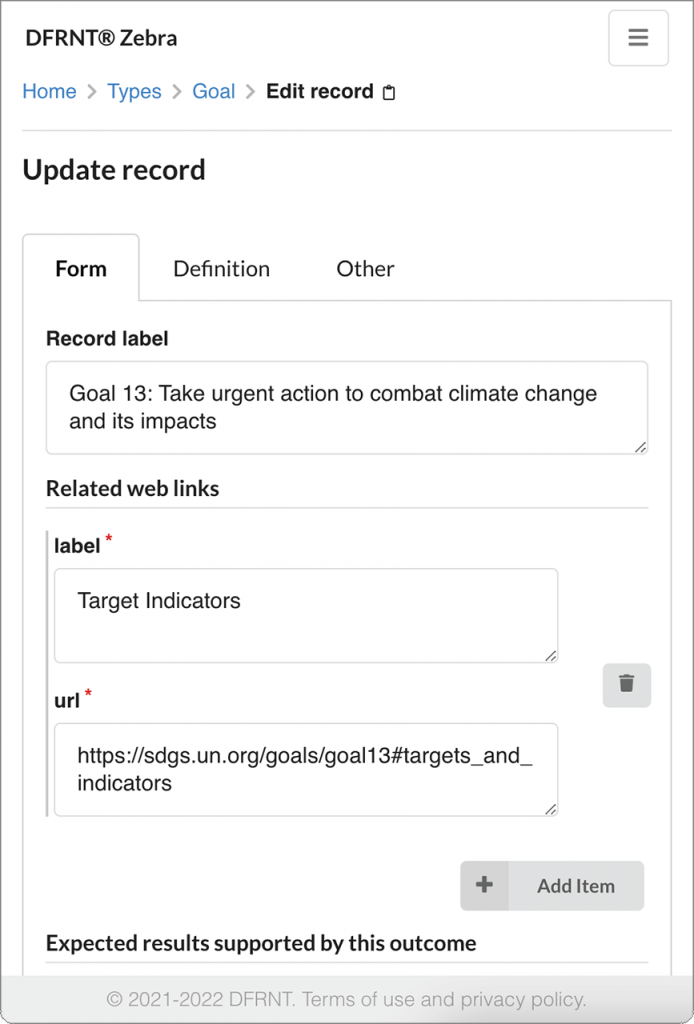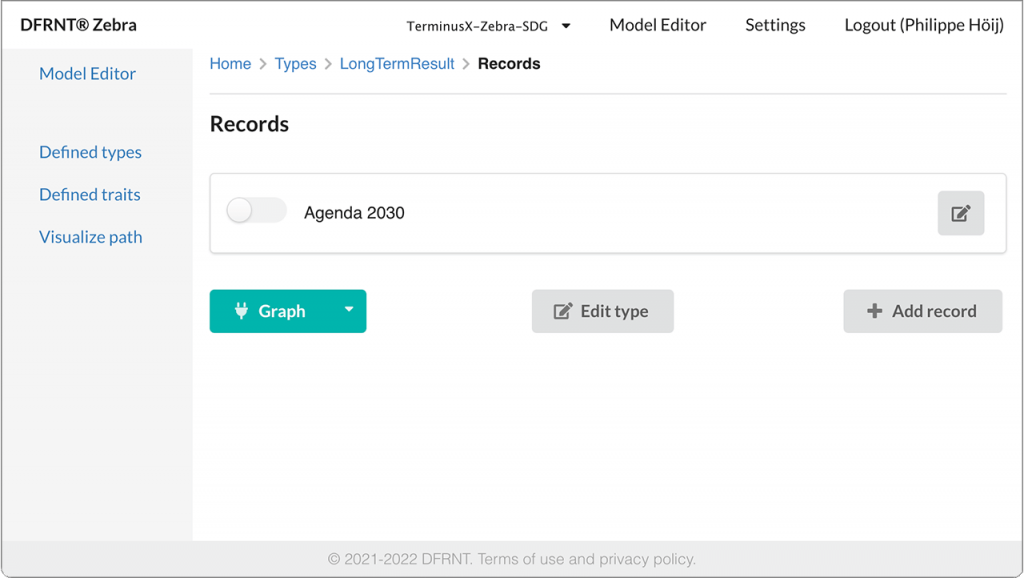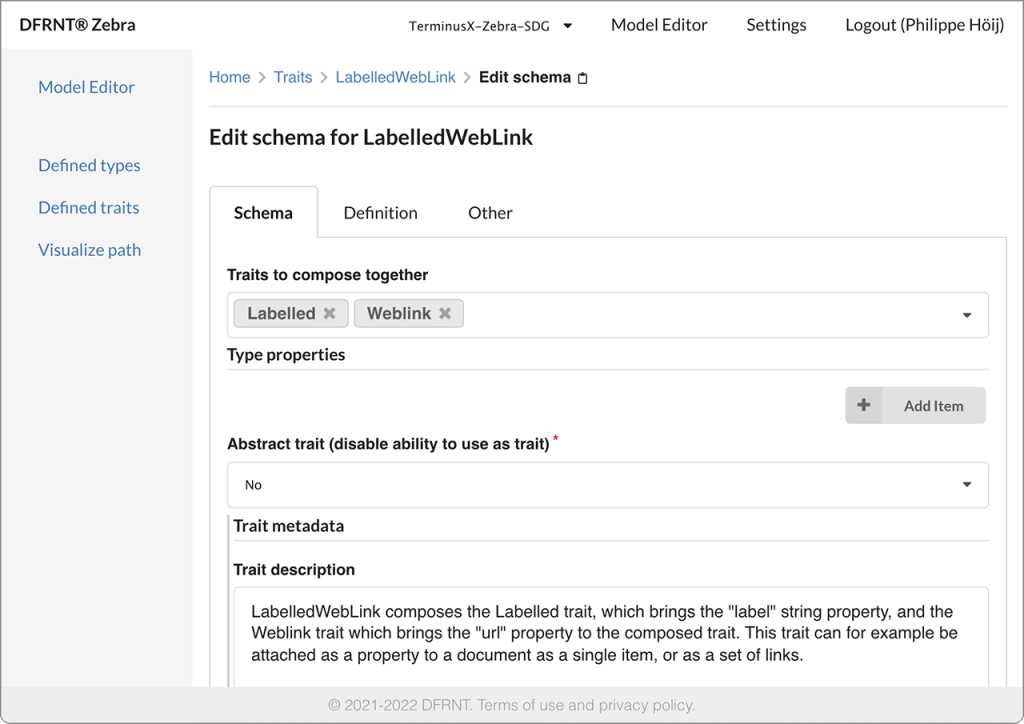How do you drive intentional change, affecting the way people think and do, on a global scale? DFRNT® by ChangeAbility is building a platform based on TerminusX, to equip changemakers to make an impact. Their idea is to harness semantic knowledge graphs for sensemaking in initiatives, in a data mesh approach.
Philippe from DFRNT is sharing about the platform they are building and their plans.
DFRNT is about outcome orientation
The DFRNT Zebra platform (beta waiting list sign-up) is about having an easy-to-use place to capture and interconnect emerging knowledge about the direction and content of an initiative. It comes out of solving our own needs for driving change, collaborating on knowledge, modeling information, and describing cause-and-effect relationships in complex client initiatives. A data-orientated whiteboard is needed when complexity rises.
The name Zebra is a wordplay on the Swedish words Se and Bra: Se translates to “see”, and Bra to “good”. To see things clearly and visualize how the dots are connected, to clarify the direction of the outcomes we seek, and importantly connect it to a burning why, through sought effects/results of the initiatives, described in your knowledge graph.
Linking public and enterprise needs
Many of the large-scale initiatives we have engaged in have had similar needs: To help changemakers reason about and keep track of connected knowledge; and to change the status quo in intentional directions. The domains have shifted over time, yet the needs have been very similar. Much of the information we have had to organize includes metadata about governance structures, systems, and theories of change we collaborated on.
The tools at our disposal were mostly inadequate. Integrating data to connect the dots has too often been too hard to be worthwhile. Schema reuse and a way to enable the knowledge and insights uncovered from the information modeling were a challenge.
Last year we founded a grant-funded project, AIDITTO, together with a team of visionaries. It was a response to the pandemic and won multiple awards including being a winner of EUvsVirus, and we did try out a few ideas there. Additionally, as part of the initiative, we conducted research on how to build boundary objects. Systems that would allow people to collaborate broadly and share knowledge at scale. We realized that what we were looking for was a broader thing than we had initially imagined.
Connected knowledge is everything
We believe that to make effective use of knowledge, you need to contextualize and connect it to other knowledge, the network effects are at play. The information must be made possible to work and integrate with—freely and easily. We made a big bet on TerminusX/TerminusDB, some of the key benefits are the permissive open-source license, great folks behind, awesome data model, git-for-data approach and that it is available as a service, which enables our clients to build their own connected data products.
For us at DFRNT, having an open backend completely removes the vendor data lock-in for our clients and for us. Our clients can use our software for some aspects, and other software for what other vendors are great at. And our target audience is completely free to continue working on the captured knowledge on their own terms.
Building an ecosystem of tools
We expect that over time, TerminusDB has the potential to become a de-facto standard to capture connected data. Much as PostgreSQL, MySQL and MongoDB are some of the most common backend databases to build prototypes on.
Our bet allows us as consultants to hand over described, typed and connected knowledge in a neat way without restrictions. It allows our clients to continue their knowledge work independently of us, which we believe should be a given when making data mesh bets.
DFRNT Zebra is for day zero emergent knowledge too
The combination of the enterprise needs we see, and how to connect people through boundary objects, boils down to the same basic needs: to make it possible to capture knowledge in the shape it has, at the speed of thought. This thinking includes enabling visual data mesh collaboration, modeling and data capture on the go on mobile devices and in workshop settings. The reason is that emergent ideas need a place to go.
When it’s unclear what will be needed, the ability to shape knowledge freely makes for the best thinking. If you want just a simple placeholder record to get started with an idea, start there, in your own branch – you can always choose to merge, or not to merge, later. Later, you connect it with additional knowledge you already have. Or you create completely new data structures or compose them from existing structures.

To be able to start with a basic graph and build up a knowledge graph gradually is one of the best ways to capture knowledge. It allows for that necessary ambiguity of figuring things out.
A visual canvas to capture connected knowledge

We see DFRNT Zebra as one of many canvases in the same data mesh, one way to help capture connected knowledge in. As it uses TerminusX/TerminusDB in the backend, it is expected that any other tools should interact with and change the data independently from our SaaS solution.
With a data mesh, integrations don’t have to work through us as in traditional scenarios, they can also work directly with TerminusX and continue where we left off.
We believe what is essential for good knowledge work is to be able to express knowledge freely. Thinking about complexity requires a free form approach to the data encountered. It needs to be able to connect in unexpected ways at a moment’s notice, when we realize that our models are inaccurate and need to change.
It should be possible to mix, remix and connect new knowledge with any existing knowledge. See above how it can look when you connect the Sustainable Development Goals to Agenda 2030.
The ability to get started earlier in expressing knowledge graphs is why we believe a data-orientated whiteboard approach for structured data is essential. To make connected knowledge accessible and possible to interact with for those that are part of the initiative, and beyond, in visual graph collaboration, is our vision for the tool. We have some work ahead of us, to make the full datalog foundation of TerminusDB shine as brightly as it deserves to help reason about the captured knowledge, something for a future post.
Where we are now, and our next steps
Rome was not built in a day. Neither is the DFRNT Zebra.


What exists now, initially, is the model creator, handling of schema and documents, and a first iteration of the graphing engine that can visualize connected data. We believe it is a great foundation to start learning about TerminusDB, data mesh and semantic knowledge graphs. This is why we want to release it early.
DFRNT Zebra is still mostly geared towards information modelers though, and not yet for our core target audience, the changemakers. We expect to bring changemakers an easy-to-use tool with necessary complementary tools for impact initiatives. We will get there eventually.

Above is a simple example to show the mechanism of composing two traits together, so they can be used as one single trait (called a subdocument in TerminusDB) on a type.
We are launching our beta more widely during early 2022. Onboarding has started of beta users from the waiting list, as we are building out more of the SaaS product. You’re welcome to sign up to the waiting list at https://dfrnt.se.
Note: DFRNT and Made for changemakers are trademarks of ChangeAbility AB, registered in Sweden and other countries and regions.
